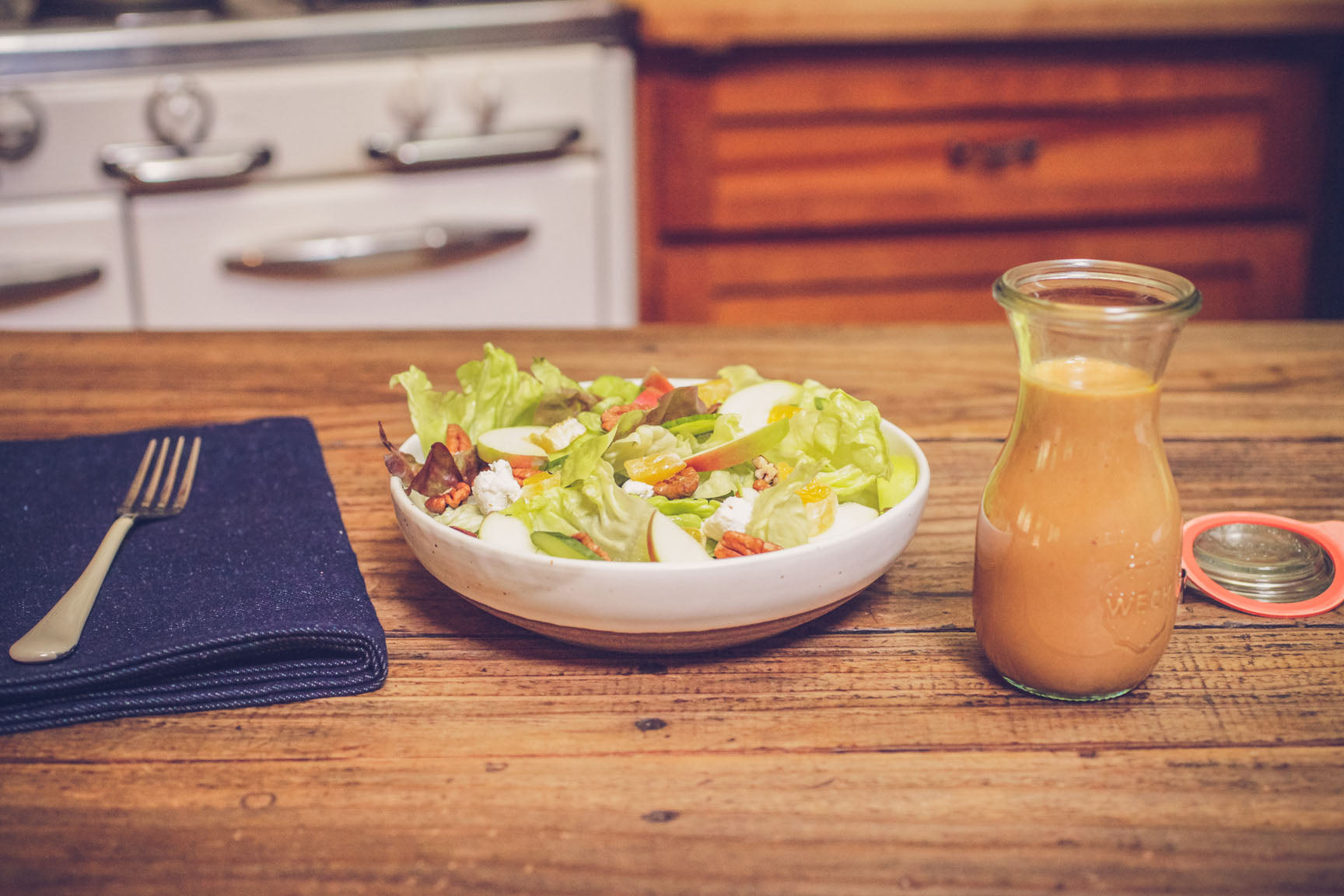- Continue Shopping
- Your Cart is Empty
Creamy Rose Hip Dressing

What You'll Need
Equipment
- measuring cups and spoons
- small saucepan
- microplane or zester
- high speed blender
- fine mesh strainer
- bottle or jar with cover for storage
Ingredients
- 1/2 cup rose hips
- 1/4 cup water, plus a few tablespoons more, if needed
- 2 tablespoons red wine vinegar or verjus
- 1 1/2 teaspoons freshly grated orange zest
- 2 Tablespoons orange juice
- sea salt to taste
- 1/2 cup olive oil
Rose hips are the small red or orange seedheads left on the rose bush after the flowers have faded. I don’t know why they are called hips; perhaps because they are so curvaceous? They are also known as rose haws, which does not have quite the same ring to it. They ripen from green to orange and some to deeper red. Generally, the smaller and redder the hip/haw is, the more flavor it has. And what flavor! Rich in tart vitamin C, with floral/herbal notes, rose hips are a secret ingredient in many tea blends. And that is key. While birds and other forest creatures can eat them freely when raw, the texture of a rose hip is nearly inedible to humans without cooking; the flesh is mealy, or dry, and the seeds inside have a furry coating that irritates the throat. When boiled or infused in water, though, the hips give up their rich color, flavor, and nutrition easily. Since both seeds and skins of rose hips are rich in pectin, the liquid will have a slightly thickened quality, a silkiness that glides through the mouth. In addition to vitamin C, rose hips also contain vitamins A, B1, B2, B3, and K.
If you are gathering your own rose hips, choose hips from bushes that have not been sprayed and are far from the roadside. Wild roses have better flavor than many cultivated varieties, though there are some, such as rugosa roses, that are grown specifically for their hips. You can find them, often without seeds, in the bulk herb section of many natural food stores. Commonly used for medicine for ailments ranging from the common cold to gastric inflammation, the rose hips you buy in the store will be selected for flavor and nutritional quality.
Please be sure of your identification and do not forage for wild foods unless you are an expert at plant identification.
Based on a recipe from The Occidental Arts and Ecology Center Cookbook: Fresh-from-the-Garden Recipes for Gatherings Large and Small.
Makes about 12 ounces.
Directions
Combine rose hips and water in a small saucepan, and bring to a gentle boil for 10 minutes. If too much water evaporates, add more, a tablespoon at a time; you want to have a quarter cup of infused liquid left at the end of the boil.
If too much water evaporates, add more, a tablespoon at a time; you want to have a quarter cup of infused liquid left at the end of the boil.
When the rose hip liquid has cooled slightly, pour it into a blender with the red wine vinegar or verjus.
 Whirl the mixture around, seeds and skins and all, until smooth.
Whirl the mixture around, seeds and skins and all, until smooth. Pour the pureed mixture through a fine strainer, to remove skins and seeds.
 Return the strained mixture to the blender, and add the zest, juice, sea salt, and olive oil.
Return the strained mixture to the blender, and add the zest, juice, sea salt, and olive oil.  Blend these together until a creamy consistency is reached.
Blend these together until a creamy consistency is reached. Pour this dressing generously over a salad of butter lettuce, fall apples, orange segments, and walnut for a seasonal salad sensation.
Pour this dressing generously over a salad of butter lettuce, fall apples, orange segments, and walnut for a seasonal salad sensation.
 Over to You
Over to You
It’s part of our mission here at Mountain Feed to help you make delicious, sustainable, homemade food more often. Stop by and say hello on Facebook, Twitter, Instagram or Pinterest. Or, as always, you can do it the old fashioned way and come by the store to speak with one of our in-house experts.

 Over to You
Over to You